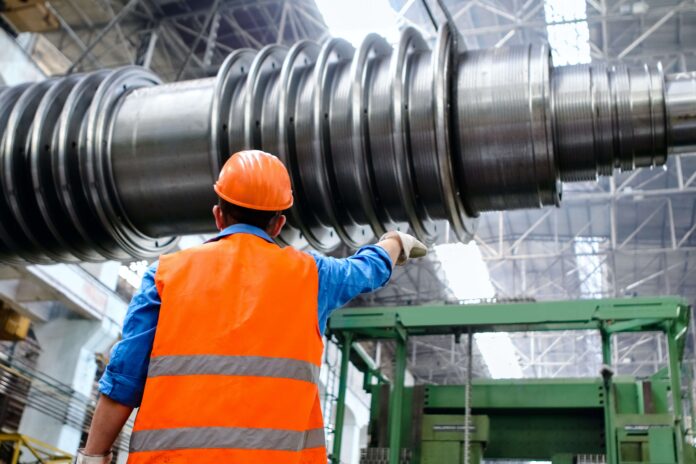The manufacturing industry has undergone a profound transformation over time. The days of handcrafted production are far behind, and the advent of automation and technological advancements is now shaping the industry’s landscape. Thus, it is critical to understand the emerging trends in the manufacturing sector. Since this is a time-consuming task, this article will simplify it for you by explaining the newer technologies in manufacturing better.
Industry 4.0: Basis of Manufacturing Revolution
To begin, Industry 4.0 is the foremost thing that has created a transformational wave of technological integration and connectivity in the manufacturing domain by integrating artificial intelligence, cloud computing, the Internet of things, and big data, flourishing a connected ecosystem. This integration enables real-time data exchange, operational efficiency, and adaptability in manufacturing. Manufacturers gain a comprehensive view of their operations through IoT, with real-time data flowing seamlessly across the production environment. Similarly, Artificial intelligence (AI) is driving intelligent automation and decision-making.
Manufacturers can utilize AI-powered systems to enhance operational efficiency, predict maintenance needs, and optimize resource allocation. This technological integration has much more to it, as cloud computing and big data analytics support the immense computational power required by Industry 4.0. Cloud platforms act as repositories for vast amounts of data, providing scalability and accessibility to manufacturers. So, the insights derived from Industry 4.0 technologies allow manufacturers to optimize inventory levels, improve demand forecasting accuracy, and respond swiftly to customer demands.
Automation and Robotics: Transforming Manufacturing Operations
Along with Industry 4.0, the introduction of automation and robotics in the manufacturing field has the potential to boost this industry further. Automation and robotics revolutionize production processes and redefine the traditional assembly lines using machinery like the linear actuator. Talking about robotics, robots with pioneering technology, like advanced sensors, machine learning algorithms, and vision systems, can play a central role in the advancement of modern manufacturing as well.
Advanced robotic systems leverage machine learning algorithms to analyze data and adjust real-time actions. This adaptability allows robots to handle complex manufacturing operations, such as precision assembly, quality control, material handling, and packaging, with remarkable skill and efficiency. Overall, such intelligent machines excel at performing repetitive and labor-intensive tasks with exceptional speed and accuracy, surpassing human capabilities in many aspects. Therefore, they will remain a buzz in the manufacturing domain in the future.
Additive Manufacturing: Unlocking Design and Production Potential
Among the other advancements, additive manufacturing has gained the spotlight as well. It is commonly referred to as 3D printing which aims to revamp the design and production processes in manufacturing by letting the manufacturers create complex geometries and customized products through layer-by-layer material deposition based on digital designs. This technology offers rapid prototyping, allowing for quick testing and refinement of designs, thereby reducing time-to-market and accelerating innovation cycles. It enables the production of intricate internal features, lattice structures, and lightweight designs, leading to stronger and more tailored components.
Since the additive manufacturing’s printing process encompasses a range of materials, entailing plastics, metals, ceramics, and bio-compatible materials, it has diverse applications in sectors such as healthcare, aerospace, and architecture. The advancement of this technology will trigger the manufacturing of more advanced commodities. This can give you an idea that the versatility of additive manufacturing is likely to facilitate further innovation in the manufacturing domain, enhancing customer satisfaction, driving advancements in production processes, and ensuring efficiency, innovation, and sustainability in the manufacturing industry over time.
AR and VR: Revolutionizing Training and Design
Lastly, like other things, augmented reality and virtual reality technologies are becoming popular in the manufacturing sector. AR links digital information with reality, offering workers real-time instructions, virtual annotations, and graphical overlays. This augmentation enhances worker efficiency, reduces errors, and shortens training times. Conversely, VR enables virtual design and simulation, allowing manufacturers to visualize and optimize production workflows in a virtual environment. With VR, manufacturers can identify bottlenecks, test different scenarios, and refine processes before physical implementation, improving efficiency and reducing costs. So, together the two will lay a positive impact on the manufacturing industries.
Conclusion
To conclude, technologies like automation and robotics, augmented reality, 3D printing, virtual reality, and Industry 4.0 are revamping the operational procedures of the manufacturing domain. They will most likely enhance the manufacturing sector’s operational efficiency, decision-making, and design possibilities. So, those who want to set the right foot here must harness the potential of these tech advancements and drive innovation, and sustainability in their manufacturing business.



